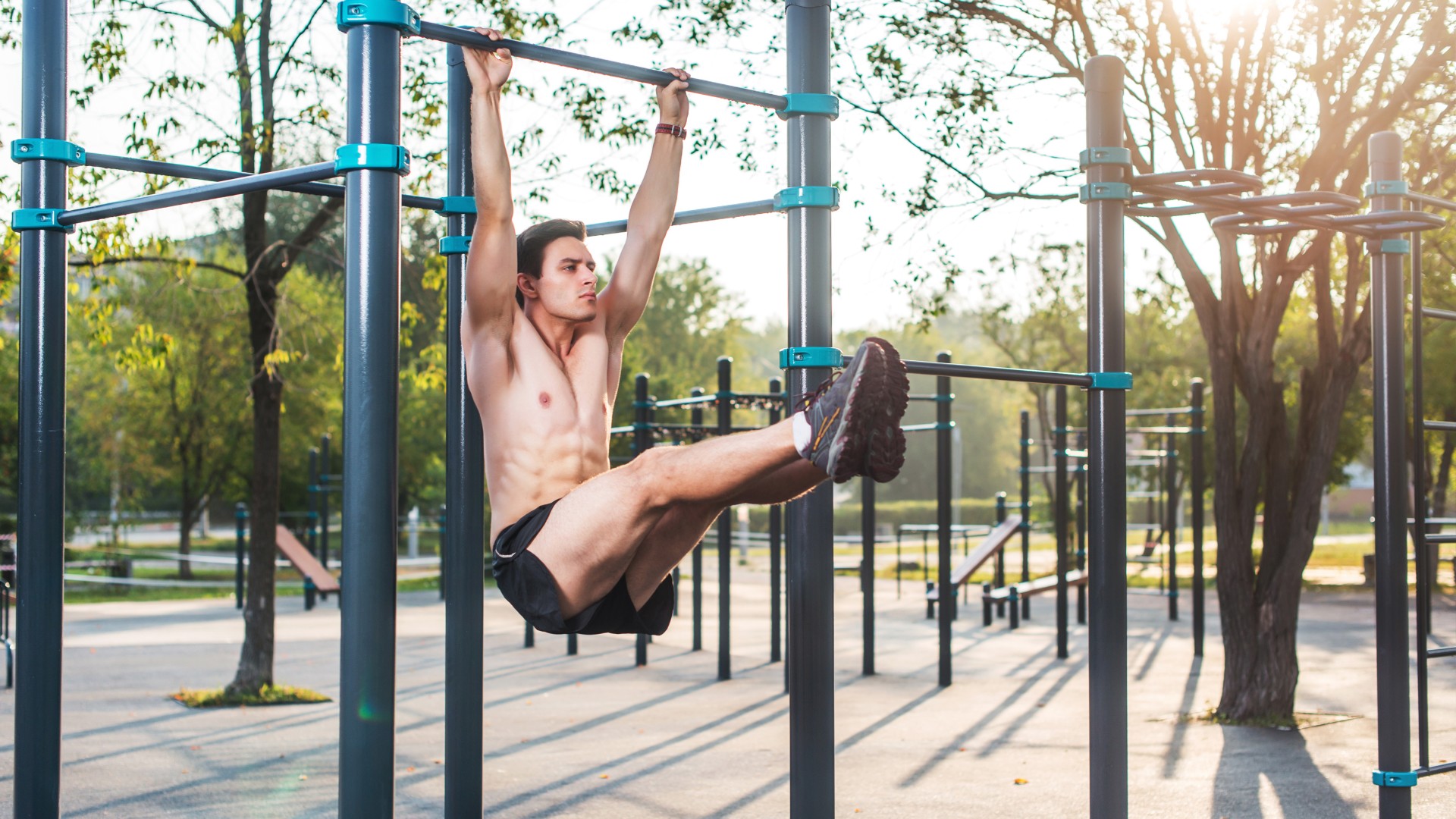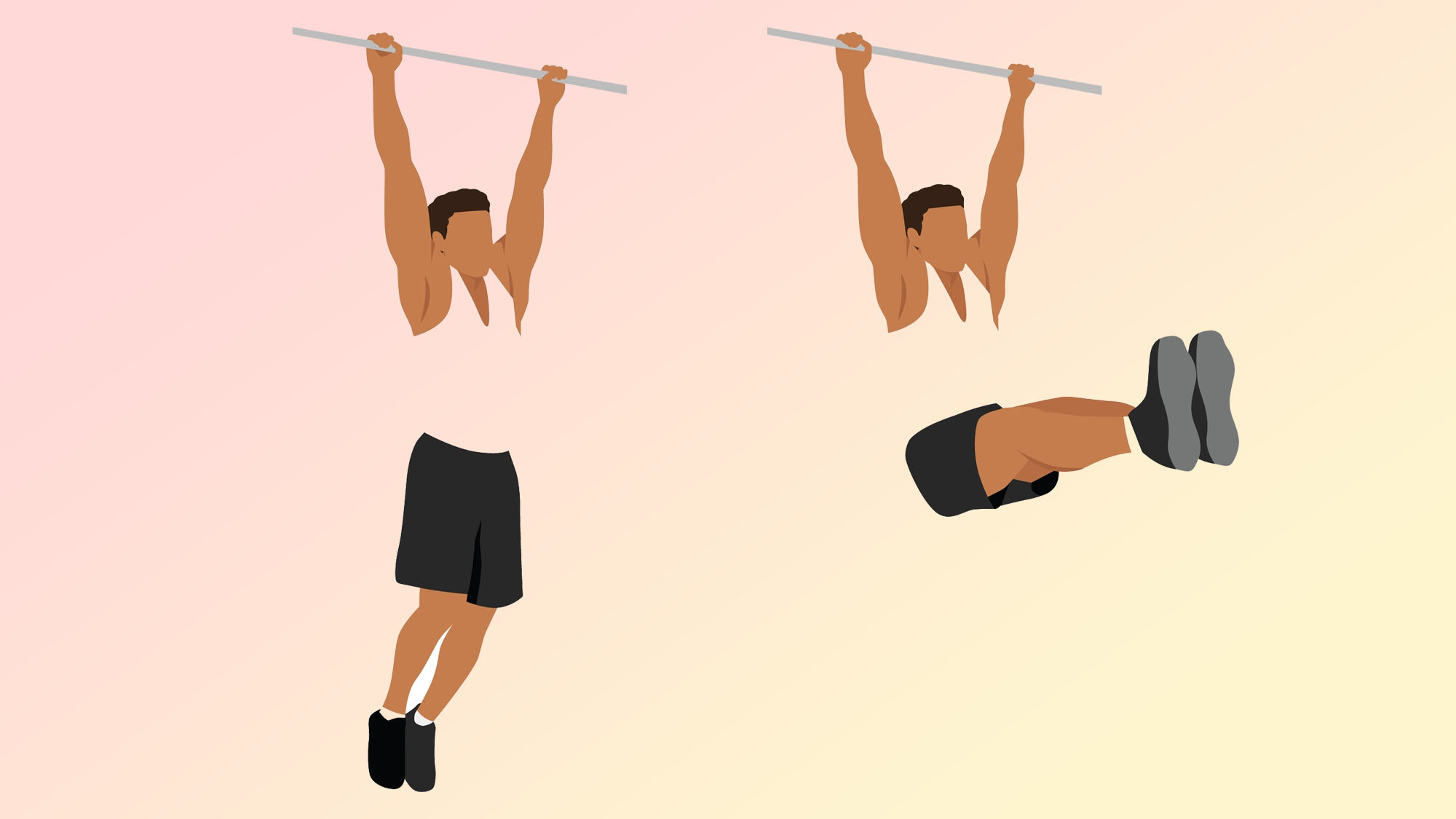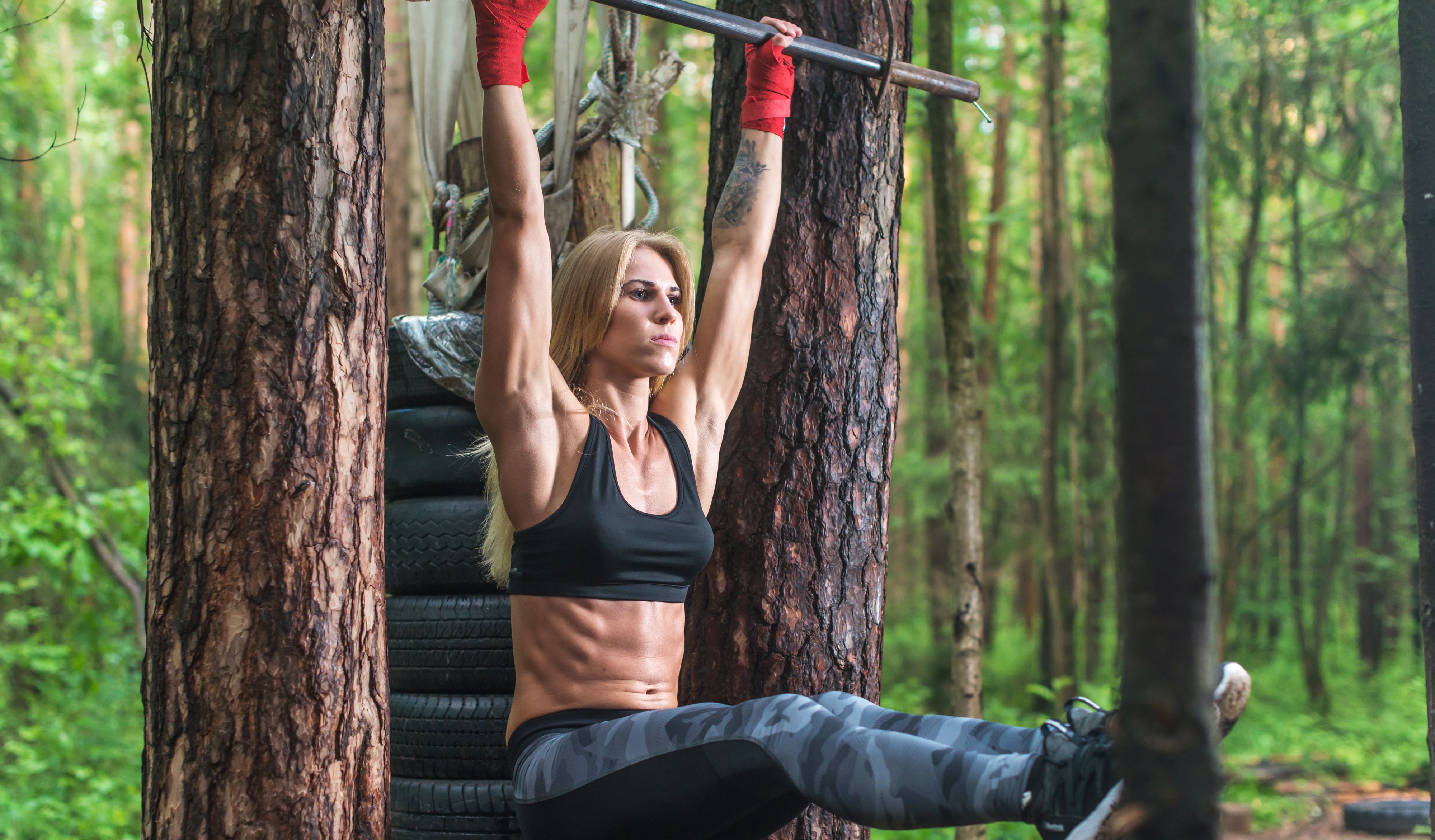
I did 90 hanging leg raises every day for a week, and I’ve shelved the exercise until further notice.
The fitness challenge overlapped with commando planks every day for a week, so it’s fair to say my legs have some catching up to do. Hanging leg raises target your abs, particularly your lower abs and hip flexors, activate your lats, and develop shoulder and grip strength through isometric contraction (without flexing or extending your arms).
You’ll need to lift your legs towards your chest during the move while hanging from a bar, which also develops hamstring flexibility. But it’s worth reminding yourself that variety is best when exercising, so I don’t recommend 90 reps of any exercise every day. Try to factor in recovery days and mix things up to create a complete strength training routine. And these are the best yoga mats to recover on afterward. Here’s how I got on.
How to do hanging leg raises

Hanging leg raises can be modified for beginners and advanced gym-goers. To start, practice with bent knees and progress toward extending your legs in front of you, which develops hip flexor strength and boosts flexibility in your hamstrings.
How:
- Stand underneath a pull-up bar and grip slightly wider than shoulder-width apart
- Wrap your thumbs around the bar and fully extend your arms
- Tuck your pelvis toward your spine and squeeze your stomach muscles
- Hang from the bar with legs extended, then on your exhale, draw your legs toward your chest
- Pause, then lower your legs to the starting position.
Keep your pelvis slightly tucked, which helps keep your abs engaged. The move primarily targets the rectus abdominal muscles, including those hard-to-reach lower abs (this lower abs workout is also our go-to). It also strengthens the shoulders and arms as you hang from the bar and torches your hip flexor muscles as you lift your legs.
I did 90 hanging leg raises every day for a week — here’s what happened to my core

My upper body took a torching. Here's why.
Day 1
Hanging leg raises are the robust sibling of laying leg raises — leg raises performed on your back. This move is an advanced version, so practicing leg raises first will help you develop technique if you haven’t tried it before.
My grip strength needs work, so I strapped on some grip gloves and tackled 12 reps with 20-30 seconds of rest between sets. My forearms and wrists were the first to suffer, but not for long.
Days 2 and 3
The challenge overlapped with doing 90 commando planks every day for a week, and my shoulders were already fired up. The trick is to muster up as much upper body engagement as possible, contracting the shoulders, back, chest, and core muscles as you move as one solid unit.
I had to drop down on a few occasions but mostly managed to make 12 reps each time before resting. I mixed between keeping my knees bent and extending my legs, which fired up my quads, hamstrings, and hip flexor muscles straight away and ramped up the intensity even more. However, I found it hard to reach my toes to the bar repeatedly, so I alternated for the remaining days.
Days 4 and 5
Just over the midway point, I could tell my body was tired. My lower back and left rotator cuff muscles began aching, meaning I needed to engage my stabilizing muscles and core more.
The rectus abdominal muscles run from the ribs to the pelvis along the front of the body. Commonly referred to as the ‘six-pack muscles,’ they’re the ones you see when shredded athletes whip off their tops during workouts. You can target these sought-after muscles through crunches and moves that require extension and flexion of your trunk, and this move helps activate the lower abs by targeting the hip flexors as you move your legs.
As a reminder, body fat plays a pivotal role in muscle definition — you can learn how to calculate body fat percentage and why it matters here. But if you want to build strength in your midsection, shoulders, and hips — consider this core exercise.
Research has shown that leg raises significantly increase activation in the hip flexors (mine were trembling), but if you suffer from lower back pain, treat this exercise with caution and seek advice from your physician first.
Day 6
I added weight.
Could my decision to attempt 90 reps be a form of self-sabotage? I briefly added a light dumbbell between my feet on day five before swiftly removing it again.
Yep, that increased intensity in my hips and abs, but I began swinging my torso.
Using my body weight, I avoided completely releasing into a dead hang at the bottom of each rep by tilting my pelvis toward my spine. You don’t need to add weight to this move — a decent calisthenics workout can put your body through the wringer without weights. Instead, I moved with slow control, utilizing a technique called time-under-tension, which increases the time muscles spend contracting.
Ouch.
Day 7
With the end in sight, I decided to scrap the format and tackle as many reps as possible at a time for a core-bursting burnout before giving my shoulders some much-needed TLC. I focused on a big squeeze at the top of the move, keeping my legs extended for as many reps as my body would allow. By the end of the last 90 reps, I waved goodbye to the pull-up bar and took my sore core home for a rest.
Verdict? 630 reps later, and I still can't get off the sofa with notable speed.







